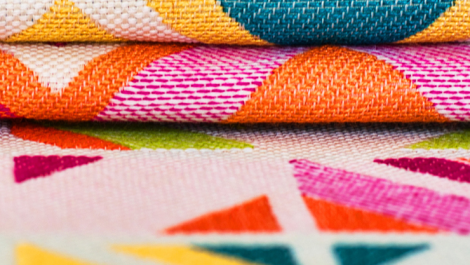An article published on Nature’s Nanotechnology website section details a method for producing colour images with the maximum possible resolution, approximately 100,000 dpi. The article’s authors work in Singapore, at the Institute of Materials Research and Engineering and the Institute of High Performance Computing.
According to the authors, the diffraction limit of light allows pixels down to 250 nanometres, which translates to images of 100,000 dpi. They have demonstrated a 50 micron wide colour test image that’s about the width of a human hair and can only be viewed through microscopes. Proposed applications mostly concentrate on security imaging: ‘security, steganography, nanoscale optical filters and high-density spectrally encoded optical data storage,’ said the authors.
This sort of imaging cannot be achieved by normal colorants, but the authors demonstrate that it can be done by encoding colour information in the dimensional parameters of metal nanostructures. Tuning their plasmon and Fano resonance determines the colours of the individual pixels.
In plainer English, this means producing a series of minute raised discs (nanodiscs) on a ‘backreflector’ surface, both of which are then coated with a thin layer of gold.
The examples shown in the Nature article group the nanodiscs in either 2×2 or 3×3 arrangements to produce each pixel. Varying the diameter and spacing of the discs affects the wavelengths of light that they reflect. The discs can be produced by electron beam imaging of a resist coating, with non-dot areas washed away by a ‘salty developer.’ The metal coating (a chromium adhesion layer followed by gold) is vital to the colour reproduction, say the authors; without it the nanodots only reproduce greyscales.
The article says that the relationship between dot size and pitch can be controlled to vary the reflectance between 400 and 800 nanometres. The human eye is normally sensitive to a range between about 380 nm (perceived as blues) to 740 nm (perceived as reds).
A 50 micron sample images of a face is reproduced in the article. It shows rather low colour fidelity due to the dots reflecting mainly blue and red, although a colour measurement chart that’s also shown in the article shows that a full spectrum of colours is possible. Colour fidelity probably isn’t terribly important at this stage and for this sort of imaging. However the authors say that it can probably be improved by further work on the nanodot structuring.
The authors are Karthik Kumar, Huigao Duan, Samuel C W Koh, Jennifer N Wei and Joel K W Yang at the Institute of Materials Research and Engineering in Singapore, and Ravi S Hegde at the Institute of High Performance Computing, also in Singapore.
The article can be read here: www.nature.com/nnano/journal/vaop/ncurrent/full/nnano.2012.128.html

